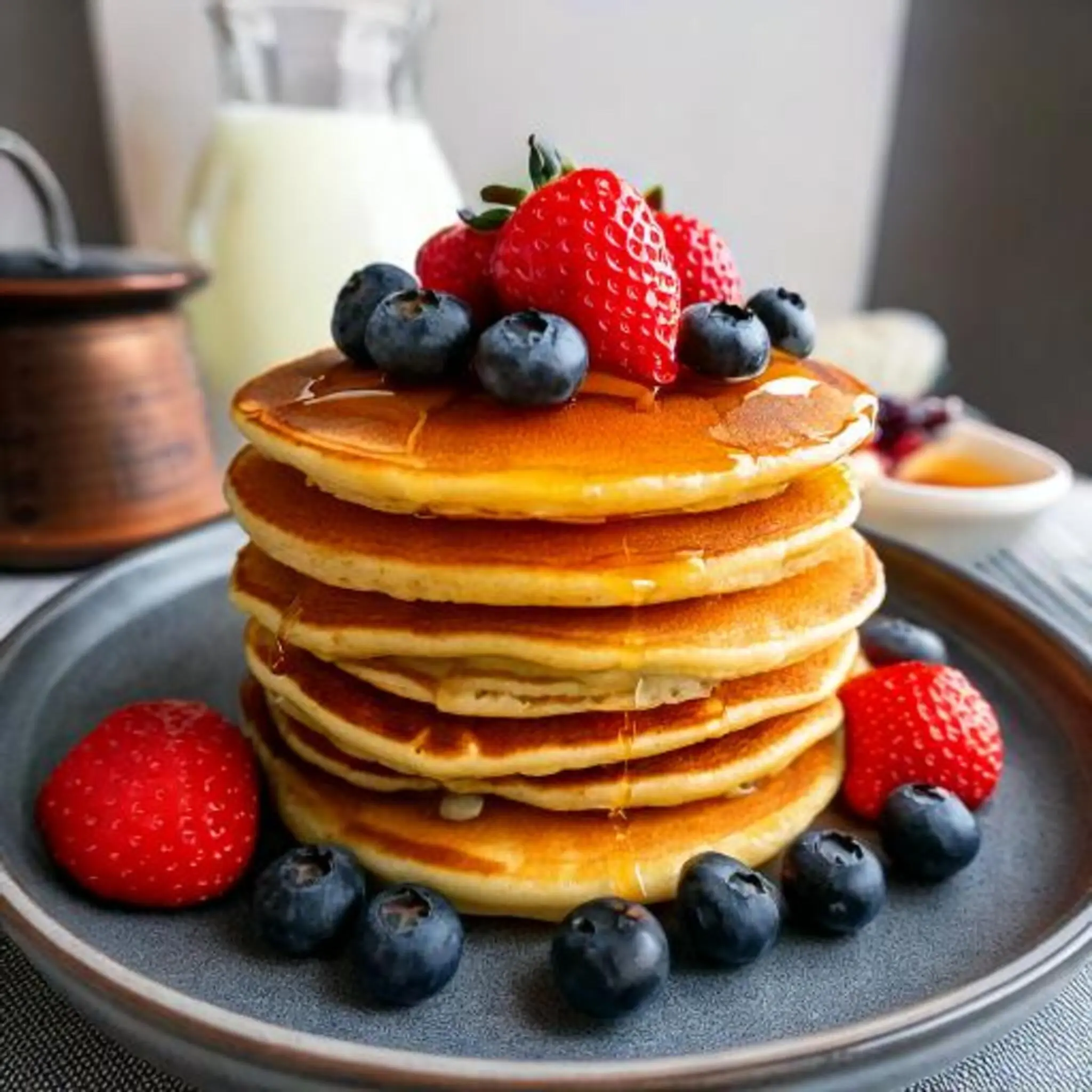Eggless pancakes are a game-changer in the world of breakfast recipes. Whether you’re out of eggs, dealing with allergies, or following a vegan diet, these pancakes offer the perfect solution. The best part? They are just as fluffy, light, and flavorful as traditional pancakes. You won’t even miss the eggs!
This guide will walk you through the simple ingredients, easy preparation steps, and expert tips to make the ultimate eggless pancakes at home. Whether you’re making them for yourself, family, or guests, you’ll learn how to create a meal that’s bound to impress. Plus, with endless variations and serving ideas, you can tailor this recipe to suit your taste.
Table of contents
Ingredients Overview Eggless Pancakes
Essential Ingredients for Eggless Pancakes
Making fluffy and delicious eggless pancakes requires only a handful of basic ingredients, most of which are probably already in your pantry. Here’s a closer look at each one and its role in creating the perfect pancake:
- All-Purpose Flour
- This is the foundation of your pancakes. It provides structure and gives them a soft, fluffy texture. For healthier options, you can use whole wheat flour, but the pancakes may turn out denser.
- Tip: If you’re aiming for extra fluffiness, sift the flour before mixing.
- Baking Powder
- A critical ingredient, baking powder acts as the leavening agent, helping the pancakes rise and become airy. Be sure your baking powder is fresh for the best results.
- Tip: If you don’t have baking powder, a combination of baking soda and an acidic ingredient like lemon juice or vinegar can work.
- Granulated Sugar
- Sugar adds a touch of sweetness to your pancakes. Feel free to adjust the quantity based on your preference.
- Alternatives: For healthier versions, swap sugar for maple syrup, honey, or coconut sugar.
- Milk or Plant-Based Milk
- Milk brings moisture to the batter, binding the ingredients together. For a vegan option, almond milk, soy milk, or oat milk work perfectly without compromising on taste or texture.
- Tip: Using slightly warm milk can make the batter smoother.
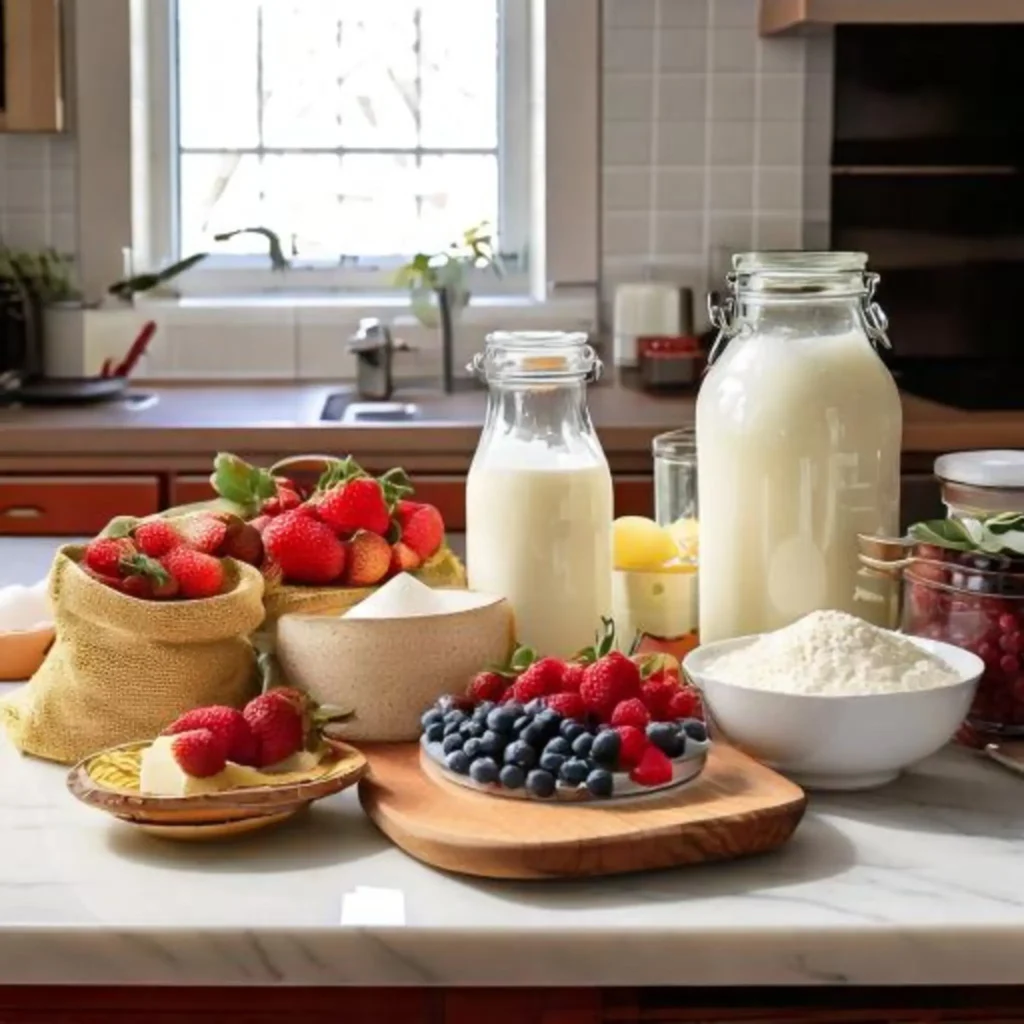
More Essential Ingredients
- Butter or Oil
- Fat plays a dual role in flavor and texture. Melted butter adds a rich, buttery taste, while neutral oils like vegetable or canola oil keep the pancakes light. For a vegan option, use coconut oil or vegan butter.
- Vanilla Extract
- A splash of vanilla enhances the flavor of the pancakes, giving them a warm, sweet aroma.
- Tip: If you’re making savory pancakes, omit vanilla and replace it with herbs or spices.
- Salt
- A pinch of salt balances the sweetness and enhances the overall flavor of your pancakes.
Substituting Eggless Pancakes
Eggs in traditional pancake recipes serve as binders and leavening agents. However, you can easily replace them in eggless pancakes with these alternatives:
- Mashed Bananas: Adds natural sweetness and works well in fruity pancake variations.
- Applesauce: Great for binding and adding a mild fruity flavor.
- Yogurt: Regular or plant-based yogurt provides moisture and a slightly tangy taste.
- Buttermilk Substitute: Mix 1 cup of milk with 1 tablespoon of vinegar or lemon juice and let it sit for 5 minutes. This acidic mixture reacts with baking powder, creating fluffy pancakes.
Step-by-Step Eggless Pancakes Preparation
Now that we’ve covered the essential ingredients for eggless pancakes, it’s time to dive into the preparation process. Follow these simple steps to whip up perfectly fluffy and golden pancakes every time.
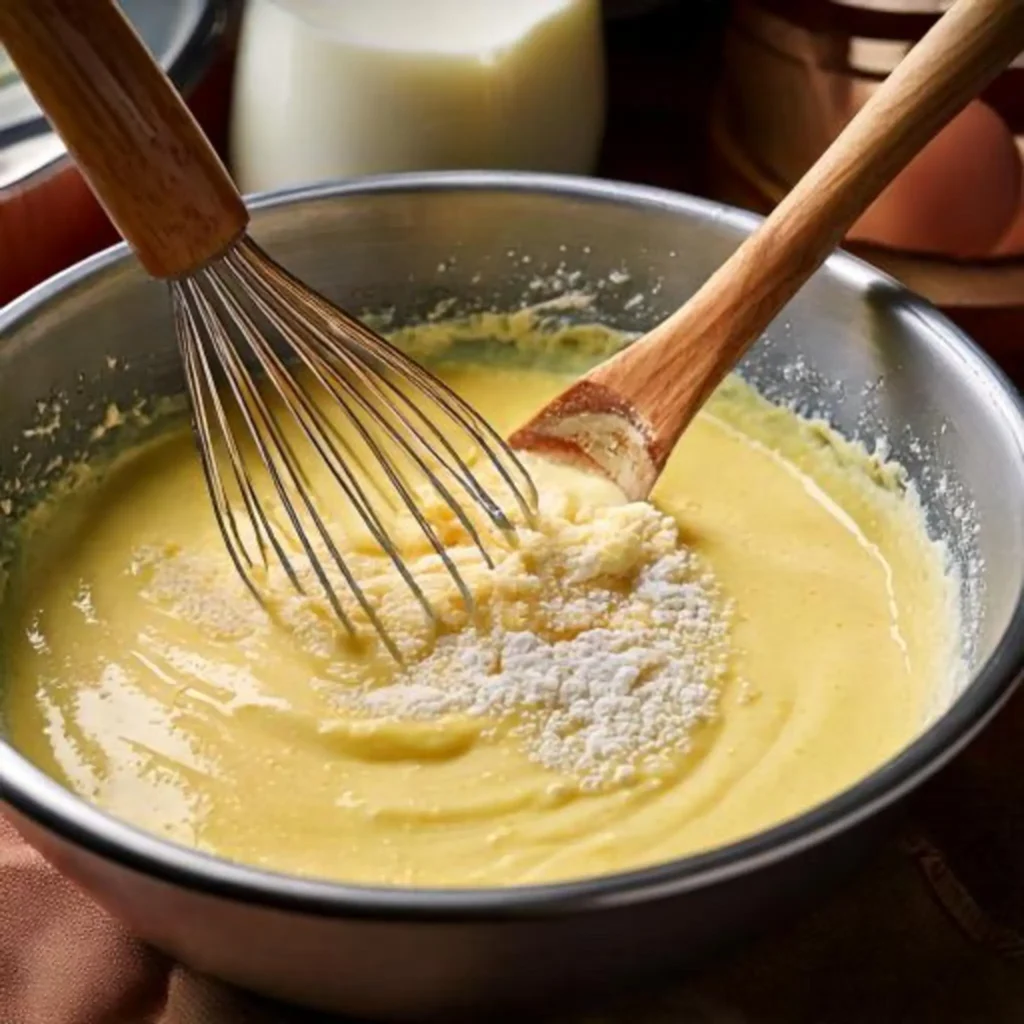
1. Mixing the Dry Ingredients (Eggless Pancakes)
Start by preparing the dry ingredients, which will serve as the base of your batter.
- Gather the Ingredients:
In a large mixing bowl, add the following:- 1 ½ cups of all-purpose flour
- 2 tablespoons of granulated sugar
- 2 teaspoons of baking powder
- A pinch of salt
- Whisk Together:
Use a whisk to evenly combine the dry ingredients. This ensures that the baking powder is well distributed, which helps the pancakes rise evenly. - Sifting (Optional):
For extra light pancakes, sift the dry ingredients through a fine mesh sieve before mixing. This step prevents lumps and creates a smoother batter.
2. Preparing the Wet Ingredients
Next, you’ll need to mix the wet ingredients in a separate bowl.
- Combine the Wet Ingredients:
In another bowl, add:- 1 ¼ cups of milk or plant-based milk
- 2 tablespoons of melted butter or oil
- 1 teaspoon of vanilla extract
- Whisk Gently:
Whisk the wet ingredients until they are fully combined. Be sure to let melted butter cool slightly before adding it to prevent curdling. - Optional Additions:
If you’re substituting eggs, now is the time to add your chosen replacement, such as ¼ cup of mashed bananas or applesauce.
3. Combining Wet and Dry Ingredients
Now it’s time to bring the wet and dry components together.
- Create a Well:
Make a small well in the center of the dry ingredients. This will help you gradually incorporate the wet mixture. - Mix Slowly:
Pour the wet ingredients into the well and gently stir with a spatula or wooden spoon. Mix just until the ingredients are combined. It’s okay if the batter is slightly lumpy—overmixing can make pancakes dense. - Check Consistency:
The batter should be thick but pourable. If it seems too thick, add a tablespoon of milk at a time until it reaches the desired consistency.
4. Resting the Batter (Optional but Recommended)
Allow the batter to rest for 5–10 minutes. This step lets the gluten in the flour relax and gives the baking powder time to activate, resulting in fluffier pancakes.
Cooking Techniques
Now that your batter is ready, let’s move on to the actual cooking process. This is where your pancakes transform from a simple mixture to fluffy, golden perfection. Follow these techniques to achieve consistently great results.
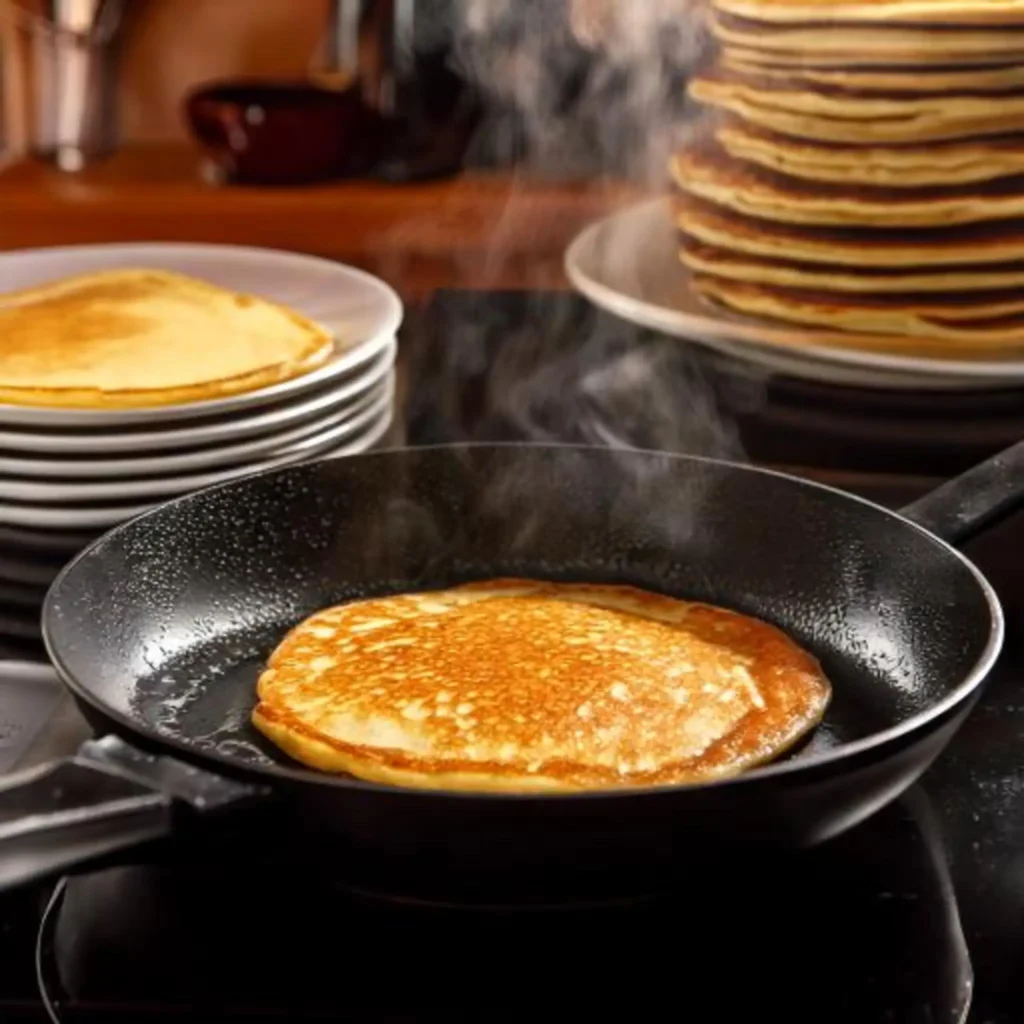
1. Preparing Your Cooking Surface
Before you start, it’s crucial to set up your cooking station properly.
- Choose the Right Pan:
- Use a nonstick skillet or a flat griddle for best results. The nonstick surface ensures easy flipping and even cooking.
- Cast-iron pans can also work but require pre-seasoning to prevent sticking.
- Preheat the Pan:
- Heat your pan over medium heat for 2–3 minutes. To check if it’s ready, sprinkle a few drops of water on the surface. If they sizzle and evaporate quickly, the pan is at the right temperature.
- Grease Lightly:
- Add a small amount of butter or oil to the pan, spreading it evenly with a paper towel. Avoid using too much fat, as it can lead to uneven browning.
2. Pouring the Batter
Now it’s time to cook your pancakes.
- Scoop the Batter:
- Use a ladle or a ¼-cup measuring cup to scoop the batter. This ensures uniform pancake sizes, allowing them to cook evenly.
- Pour Gently:
- Pour the batter onto the center of the pan or griddle. It will naturally spread into a circular shape. Leave enough space between pancakes to prevent them from sticking together.
3. Cooking the First Side
- Look for Bubbles:
- Cook the pancake over medium heat until you see bubbles forming on the surface, especially around the edges. This usually takes 1–2 minutes.
- Tip: If the bubbles pop and leave small holes, it’s a sign that the pancake is ready to flip.
- Check the Underside:
- Before flipping, use a spatula to gently lift the edge of the pancake and check if it’s golden brown.
4. Flipping the Eggless Pancakes
- Flip with Confidence:
- Slide a wide spatula under the pancake and flip it in one quick motion. A hesitant flip can break the pancake.
- Cook the Other Side:
- Cook for an additional 1–2 minutes until the second side is golden brown. Avoid pressing down on the pancake with your spatula, as this can flatten it and affect its fluffiness.
5. Keeping Eggless Pancakes Warm
If you’re making multiple pancakes, keep the cooked ones warm by placing them in a preheated oven at 200°F (95°C). Stack them on a plate covered with aluminum foil to retain their heat and softness.
Common Mistakes to Avoid
- Cooking on High Heat:
High temperatures can cause the pancakes to burn on the outside while remaining undercooked inside. Stick to medium heat for evenly cooked pancakes. - Overmixing the Batter:
Overmixing leads to dense pancakes. Stir just enough to combine the ingredients, even if some lumps remain. - Flipping Too Early:
Patience is key. Wait until the edges are set and the bubbles appear before flipping.
Variations and Add-Ons
Eggless pancakes are incredibly versatile and can be customized to suit your cravings. Whether you prefer a sweet treat or a savory twist, these variations and add-ons will elevate your pancakes to the next level.
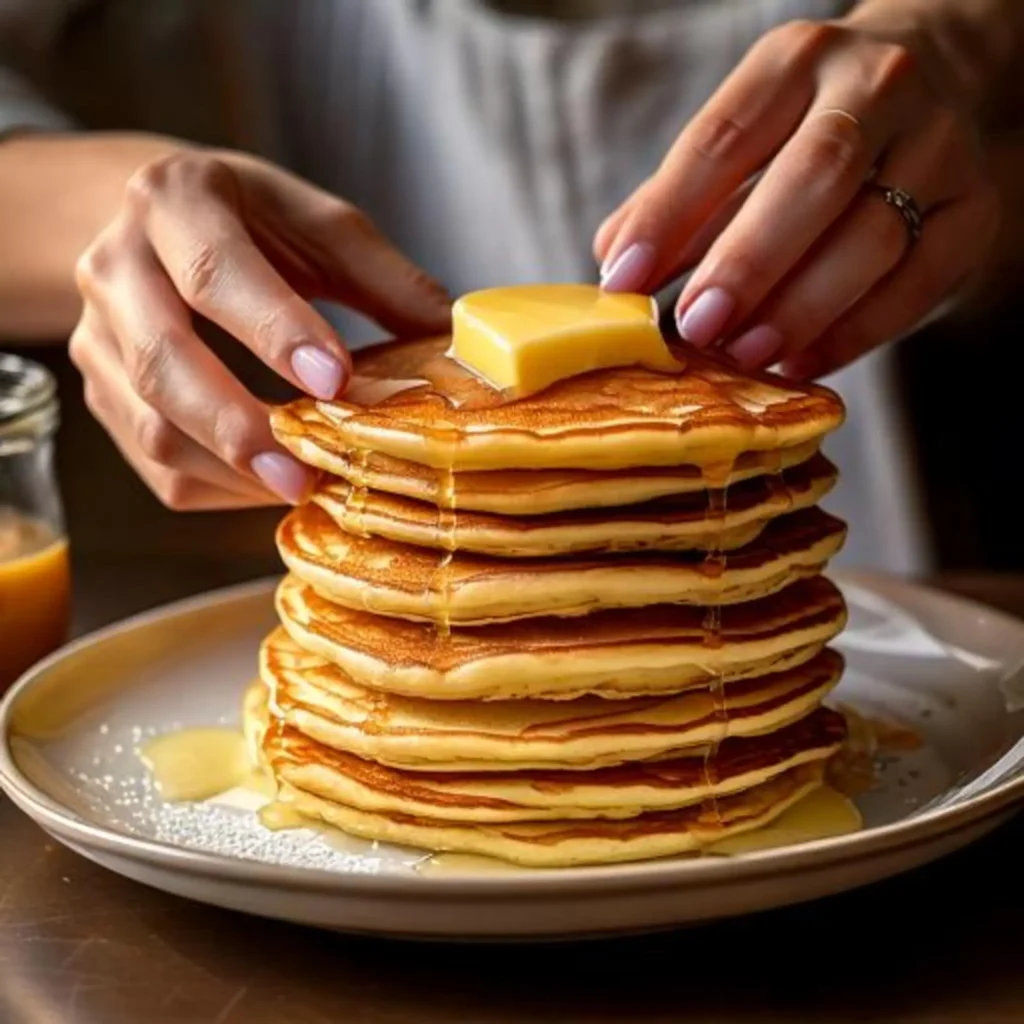
1. Sweet Variations
Sweet pancakes are a classic breakfast favorite. Here are some ideas to make them even more delicious:
- Chocolate Chip Pancakes
- Stir a handful of chocolate chips into the batter before cooking. They’ll melt into gooey pockets of chocolatey goodness.
- Tip: Use dairy-free chocolate chips for a vegan option.
- Banana Pancakes
- Add sliced bananas directly onto the batter after pouring it into the pan. The bananas caramelize as the pancakes cook, creating a natural sweetness.
- Alternatively, mash a banana and mix it into the batter for a moist and flavorful pancake.
- Blueberry Pancakes
- Toss fresh or frozen blueberries into the batter. Their tartness complements the sweetness of the pancake base.
- Tip: Coat the blueberries in flour before adding them to the batter to prevent them from sinking.
- Cinnamon Roll Pancakes
- Sprinkle a mix of cinnamon and brown sugar on the batter while it’s cooking. Swirl it slightly with a toothpick for a fun visual effect. Serve with cream cheese icing.
- Funfetti Pancakes
- Add a handful of rainbow sprinkles to the batter for a colorful, festive treat perfect for kids.
2. Savory Variations
If you’re in the mood for something less sweet, savory pancakes are a fantastic option:
- Herb Pancakes
- Mix chopped fresh herbs like parsley, chives, or cilantro into the batter for a fresh and aromatic flavor.
- Cheese Pancakes
- Add shredded cheese, such as cheddar or mozzarella, to the batter. The cheese melts as the pancakes cook, creating a gooey texture.
- Vegetable Pancakes
- Stir in grated zucchini, carrots, or finely chopped spinach for a nutritious twist.
- Tip: Squeeze out excess moisture from the vegetables to avoid making the batter too watery.
- Savory Spice Pancakes
- Enhance the batter with spices like paprika, cumin, or garlic powder for a bold, savory flavor.
3. Add-On Toppings
No pancake is complete without delicious toppings. Here are some classic and creative ideas:
- Classic Toppings:
- Maple syrup
- Butter or vegan butter
- Fresh berries like strawberries, raspberries, or blackberries
- Creative Twists:
- Nut Butter: Spread almond, peanut, or cashew butter for a protein-packed option.
- Ice Cream: Top your pancakes with a scoop of your favorite ice cream for a decadent dessert.
- Whipped Cream: Add a dollop of whipped cream, either dairy or coconut-based, for a light and fluffy topping.
- Healthy Options:
- Greek yogurt with a drizzle of honey
- Sliced avocado with a sprinkle of salt and pepper
- A handful of granola for crunch
4. Seasonal Flavors
Tailor your pancakes to the season for a festive touch:
- Fall: Pumpkin spice or apple cinnamon pancakes with a drizzle of caramel sauce.
- Winter: Cranberry-orange pancakes with powdered sugar.
- Summer: Coconut pancakes with pineapple chunks for a tropical vibe.
Storage and Reheating
Eggless pancakes are not only delicious fresh off the griddle, but they can also be stored for later enjoyment. Whether you have leftovers or want to prep ahead for busy mornings, here’s how to properly store and reheat your pancakes.
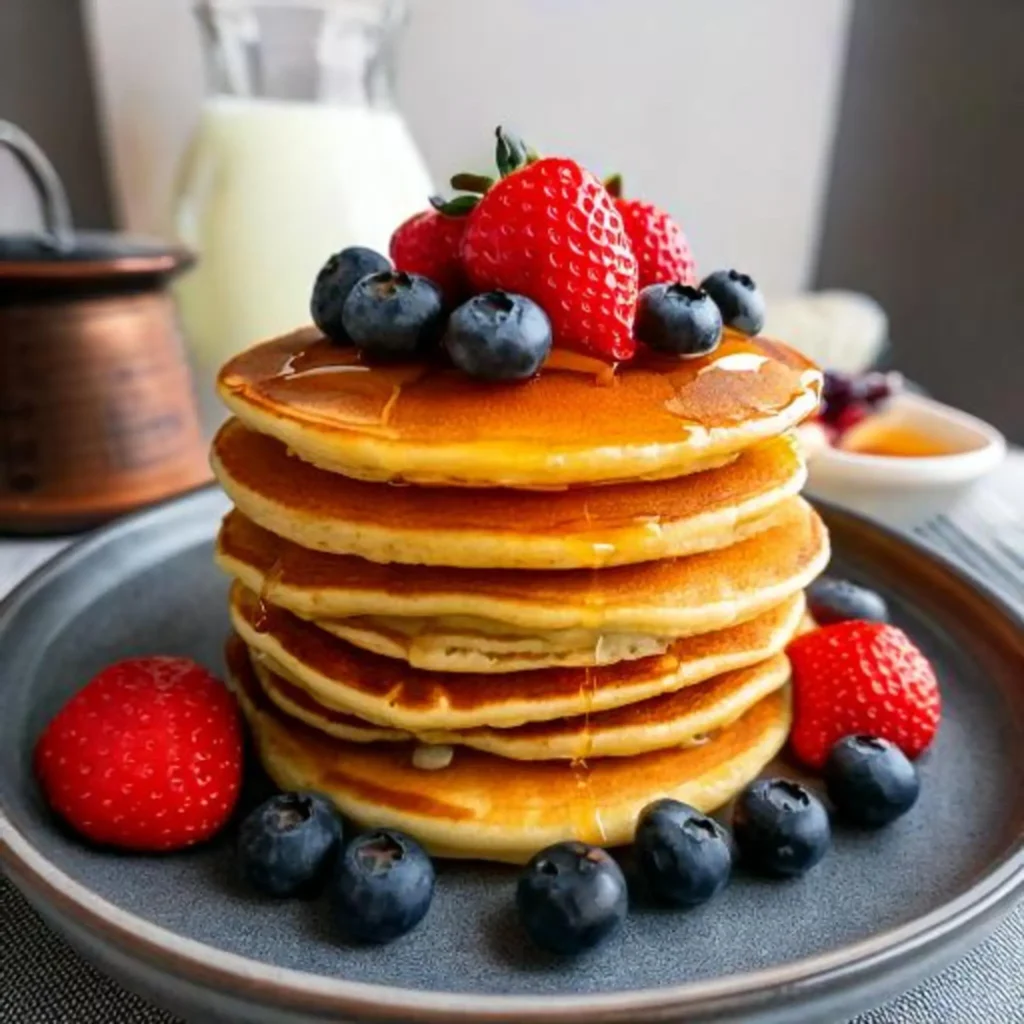
1. Storing Leftover Pancakes
Proper storage ensures that your pancakes stay fresh and flavorful for days.
- Cool Completely:
- Before storing, let the pancakes cool to room temperature. Storing them while warm can create condensation, leading to soggy pancakes.
- Use Airtight Containers:
- Stack the pancakes in an airtight container, placing a sheet of parchment paper between each one to prevent sticking.
- Refrigeration:
- Store in the refrigerator for up to 3 days. This method is ideal for short-term storage.
- Freezing:
- For longer storage, freeze the pancakes:
- Arrange the cooled pancakes in a single layer on a baking sheet and freeze for 1–2 hours.
- Once frozen, transfer them to a freezer-safe bag or container, placing parchment paper between each pancake.
- Pancakes can be frozen for up to 2 months.
- For longer storage, freeze the pancakes:
2. Reheating Pancakes
Reheating pancakes correctly will restore their original fluffiness and taste.
- Using a Microwave:
- Place a pancake on a microwave-safe plate.
- Cover with a damp paper towel to retain moisture.
- Heat for 15–20 seconds for one pancake or 30–45 seconds for a stack.
- Tip: Be careful not to overheat, as this can make the pancakes rubbery.
- Using a Toaster:
- For a slightly crisp exterior, reheat pancakes in a toaster. This works best for thinner pancakes.
- Using an Oven:
- Preheat the oven to 350°F (175°C).
- Arrange the pancakes on a baking sheet in a single layer. Cover with foil to prevent drying out.
- Heat for 5–10 minutes, depending on the quantity.
- Using a Stovetop:
- Heat a nonstick skillet over low heat.
- Place the pancakes in the skillet and cover with a lid to trap steam. Heat for 1–2 minutes on each side.
3. Prepping Pancake Batter in Advance
If you prefer freshly cooked pancakes but want to save time, you can prepare the batter in advance.
- Refrigeration:
- Store the pancake batter in an airtight container in the fridge for up to 24 hours.
- Tip: Stir the batter before using, as some separation may occur during storage.
- Freezing Batter:
- Freeze the batter in pre-portioned amounts using freezer-safe bags. Thaw overnight in the fridge before use.
4. Serving Leftover Eggless Pancakes
Revive your leftover pancakes with creative serving ideas:
- Pancake Sandwiches:
- Spread nut butter, jam, or cream cheese between two pancakes for a quick and delicious snack.
- Mini Pancake Cereal:
- Cut pancakes into bite-sized pieces and serve in a bowl with milk for a fun twist on breakfast cereal.
- Dessert Pancakes:
- Reheat and top with ice cream, chocolate sauce, or whipped cream for an indulgent treat.
FAQs About Eggless Pancakes
- Can I make eggless pancakes vegan?
- Yes! Use plant-based milk and butter, and ensure any add-ons, like chocolate chips, are dairy-free.
- Can I use gluten-free flour?
- Absolutely! Substitute all-purpose flour with a gluten-free blend for equally delicious pancakes.
- What can I substitute for milk?
- Use almond, soy, oat, or coconut milk for a dairy-free option. Water can also work in a pinch, but the pancakes may be less rich.
- Can I make pancakes without sugar?
- Yes! You can skip the sugar or replace it with natural sweeteners like honey, maple syrup, or stevia.
Conclusion
Eggless pancakes are proof that simple ingredients and a few easy steps can result in a delightful breakfast treat. Whether you customize them with sweet add-ons or savory variations, these pancakes are sure to please everyone at the table. Plus, with proper storage and reheating methods, you can enjoy your pancakes anytime without compromising their taste or texture. Happy flipping!

